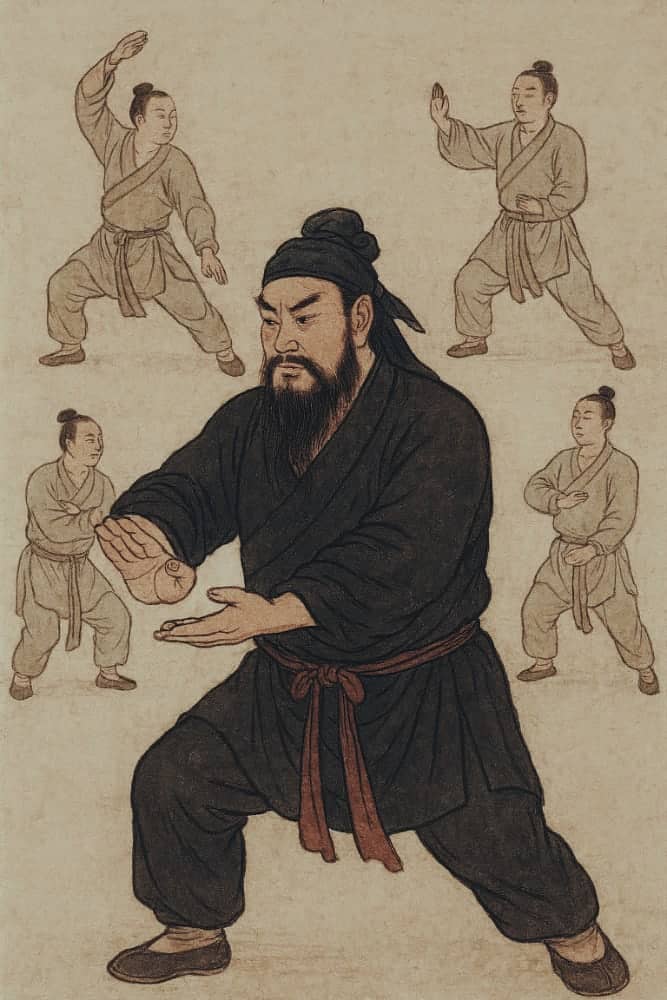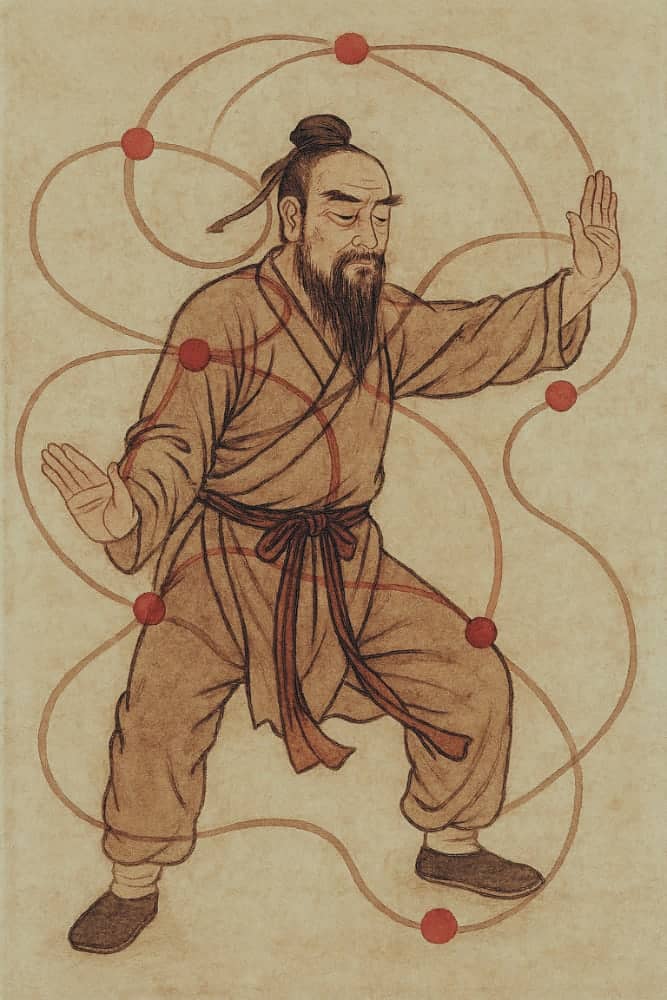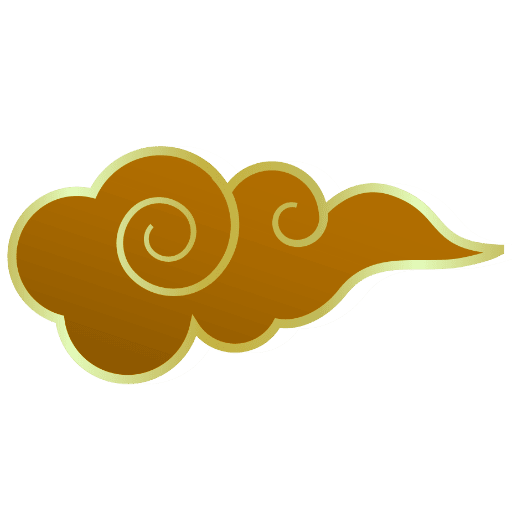The Eight Pieces of Brocade Qigong
A Daoist Health Cultivation Practice
The Baduanjin (八段錦), or Eight Pieces of Brocade, is one of the oldest qigong practices in Chinese health cultivation. It combines physical movement, breath work, and focused intention. The name comes from how the eight movements create a smooth, silken quality in the body and its energy flow—like fine brocade cloth.
Where It Comes From
The earliest written records of Baduanjin go back to the Song Dynasty (960-1279 CE). You can find it mentioned in texts like the Dao Shi (around 1150) and the Xiuzhen shi-shu (around 1300). So this practice has been around for nearly a thousand years.
How the Movements Work

The Eight Movements (Brocades):
1. Two Hands Hold Up the Heavens
2. Drawing the Bow to Shoot the Vulture
3. Separating Heaven and Earth
4. Looking Back to Eliminate Fatigue
5. Sway Head and Shake Tail to Calm Heart Fire
6. Two Hands Hold the Feet to Strengthen Kidneys
7. Clench Fists and Glare to Increase Strength
Grasp Ankles to Strengthen Waist and Kidney
The Standard Way: Most versions have you rise up on your toes and bounce gently. The vibrations smooth out your qi after all the previous movements. This stimulates the six meridians that run from your toes to your internal organs.
The Wudang Mountains Version: In the Wudang region, they do this movement differently. It's called "Grasp Ankles to Strengthen Waist and Kidney" (or "Hold the Feet to Strengthen Waist and Kidney"). This version really emphasizes kidney work, which matters a lot in Daoist inner alchemy. Here's how it goes:
- Stand with feet slightly wider than shoulders
- Let both hands slide down the outside of your legs to your ankles
- When you're bent forward, grasp your ankles and do "three hard clicks"—three distinct pressing movements pushing your body toward your ankles
- Come back up with your hands traveling up the inside of your legs
The "Three Clicks" Part: These three pressing movements hit specific points:
- The Taixi point (behind your inner ankle) on the Kidney meridian
- The Kunlun point (behind your outer ankle) on the Bladder meridian
- Gives you stronger kidney and waist benefits than just bouncing on your toes
How to Breathe:
- Take a deep breath going down
- Inhale during each of the three presses at your ankles
- Exhale coming back up, then breathe in when you're standing again
Different regions kept different versions alive over the centuries. The Wudang variation shows how local traditions adapted the practice while keeping the therapeutic benefits.
The TCM Foundation
Baduanjin works with the meridian system—the energy channels where qi flows through your body. The goal is to clear blockages and get qi moving. You do this by stretching the meridians and opening up joints where energy tends to get stuck.
The Spiritual Side

How to Practice
Starting Out: Begin by gathering energy in your lower dantian. You need enough qi built up before you start circulating it through the exercises.
People still practice Baduanjin today not because it's historical, but because it works. While it looks simple, you need to understand the principles behind it. The internal awareness and intention matter more than just copying the external movements.Regional variations like the "three clicks" technique show how oral transmission kept unique characteristics alive while adapting to what each generation needed. The practice evolved but stayed true to its purpose—cultivating harmony between body, mind, and spirit.
No Hard Feelings
But I want you to know:
What that €18.99 actually does, because it's not just about watching videos.
Here's what your support actually funds:
- Over 1,200 video tutorials that I'm constantly adding to
- Live online classes where you can actually ask questions and get real-time corrections
- Weekly blog posts breaking down complex Daoist principles into understandable concepts
- Archiving work – documenting authentic methods before they get lost or commercialized beyond recognition
- Translation projects – making ancient principles accessible in modern language
- The technical infrastructure to deliver all this globally
Every month, that membership keeps the lights on for something that barely exists anywhere else
